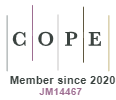Assessment of mobility and accessibility at the UPE / Unicap travel generating pole in the city of Recife - PE
DOI:
https://doi.org/10.5585/geas.v11i1.19809Keywords:
Travel generator pole, Sustainable urban mobility, Active modes of transport.Abstract
Goal: To analyze mobility at the UPE / UNICAP Travel Generating Pole (PGV) based on the observation of travel patterns, the population's input and the conditions of public transportation when accessing universities.
Methodology: Application of an online quiz with questions about the characteristics of the displacements, the motivations and barriers to use them. Analysis of the mobility and accessibility of the PGV using the Sustainable Mobility Index for University Campus (IMSCamp) and Geographic Information Systems (GIS).
Relevance: The traffic department is responsible for many impacts in the urban environment, especially by promoting individual motorized transport, which causes the abasement of the public transportation. From the perspective of sustainability, mobility must be analyzed to identify actions for the use and occupation of land in order to mitigate the damage caused to the environment and to improve the quality of people's lives.
Results: The average time of the student who lives 10 km away from the PGV is 2.8 times greater than that of the students who live 5 km away from the PGV. Undergraduate students are more likely to use active modes of transport and awareness campaigns.
Contributions: Based on the diagnosis of the current mobility situation and the identification of its main problems, it will be possible to assist in proposing improvements and adjustments that enable sustainable urban mobility in the PGV.
Conclusion: Having contact with the discussion about active means of transportation and the prioritization of pedestrians makes users more likely to reconsider the use of the private car.
Downloads
References
Barbetta, P. A. (2001) Estatística Aplicada as Ciências Sociais. 4 ed. Florianópolis: Ed. da UFSC.
Campos, V. B. G. (2006). Uma Visão da Mobilidade Urbana Sustentável. Revista dos Tranportes Públicos, 2, 99-106.
Carvalho, H. H. S. de. Santos, A. B. P. S. dos. (2018). Aplicação de Índice de Mobilidade Urbana Sustentável na Universidade Federal do Maranhão – Campus Bacanga. Anais do 32° Congresso de Pesquisa e Ensino em Tcongransportes, ANPET, Gramado, 1, 2950–2961.
Oliveira, A. M. (2015). Um Índice para o Planejamento de Mobilidade com Foco em Grandes Pólos Geradores de Viagens - Desenvolvimento e Aplicação em um Campus Universitário. Dissertação (Mestrado) - Escola de Engenharia de São Carlos, Universidade de São Paulo, São Carlos.
Parra, M. C; Portugal, L. (2006). Gerenciamento da Mobilidade dentro de um Campus Universitário: Problemas e Possíveis Soluções no Caso UFRJ. Universidade Federal do Rio de Janeiro. Rio de Janeiro, RJ.
PDTU. (2016). Plano Diretor de Transportes Urbanos da Região Metropolitana do Recife. Disponível em: < http://www.cidades.gov.br/home/stories/arquivoSEMOB/relat_final.shtm >. Acesso: 07/jul/2020.
Portugal, L. da S. (2012). Polos Geradores de Viagens Orientados a Qualidade de Vida Ambiental: Modelos e Taxas de Gerações de Viagens. Rio de Janeiro, RJ.
Pinto, J. A. M. T. (2011). Análise Espacial de Indicadores da Qualidade de Serviço de Transportes Colectivos. Dissertação de Mestrado, Universidade de Lisboa.
Ribeiro, V. (2010). Sistemas de Informação Geográfica como ferramenta de análise de distâncias. Revista GeoPlanUM, 1, p.3-7.
Stein, P. P. (2013). Barreiras, Motivações e Estratégias para Mobilidade Sustentável no Campus São Carlos da USP. Dissertação (Mestrado) - Escola de Engenharia de São Carlos, Universidade de São Paulo, São Carlos.
Downloads
Published
How to Cite
Issue
Section
License
Copyright (c) 2022 Marcia Rejane Oliveira Barros Carvalho Macedo, Luiza Bandeira Rodrigues de Carvalho, Bianca Oliveira Ferreira, Emilia Rahnemay Kohlman Rabbani

This work is licensed under a Creative Commons Attribution-NonCommercial-ShareAlike 4.0 International License.
- Abstract 1591
- PDF 866
- PDF (Português (Brasil)) 727









